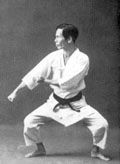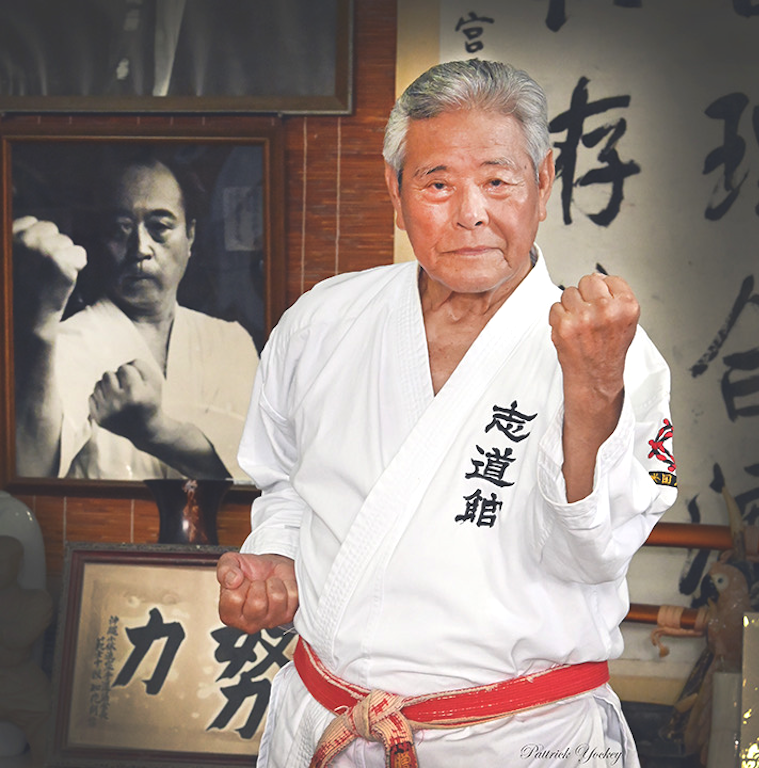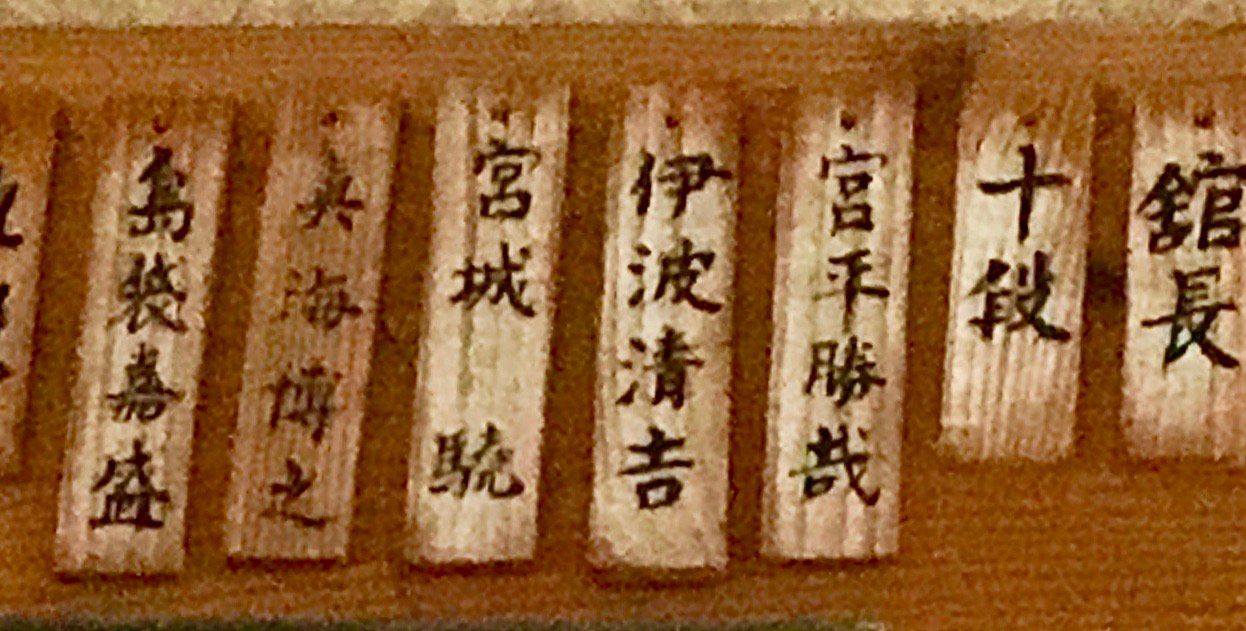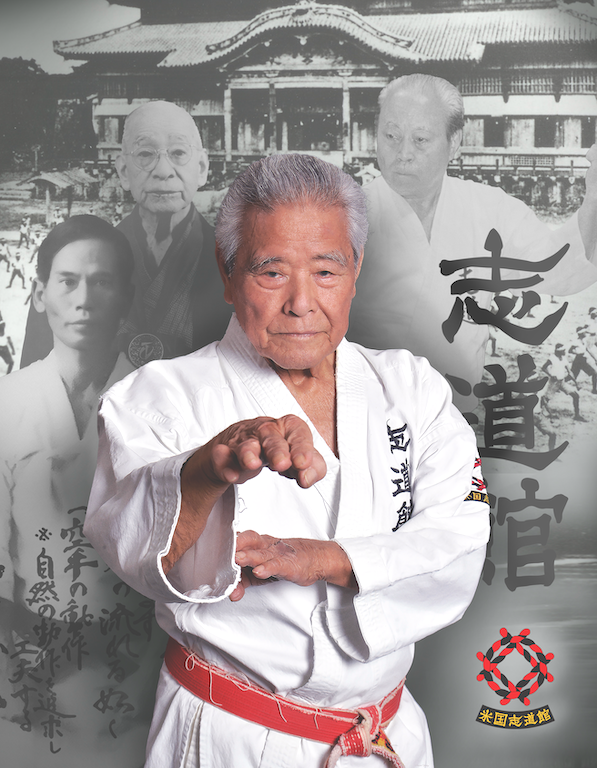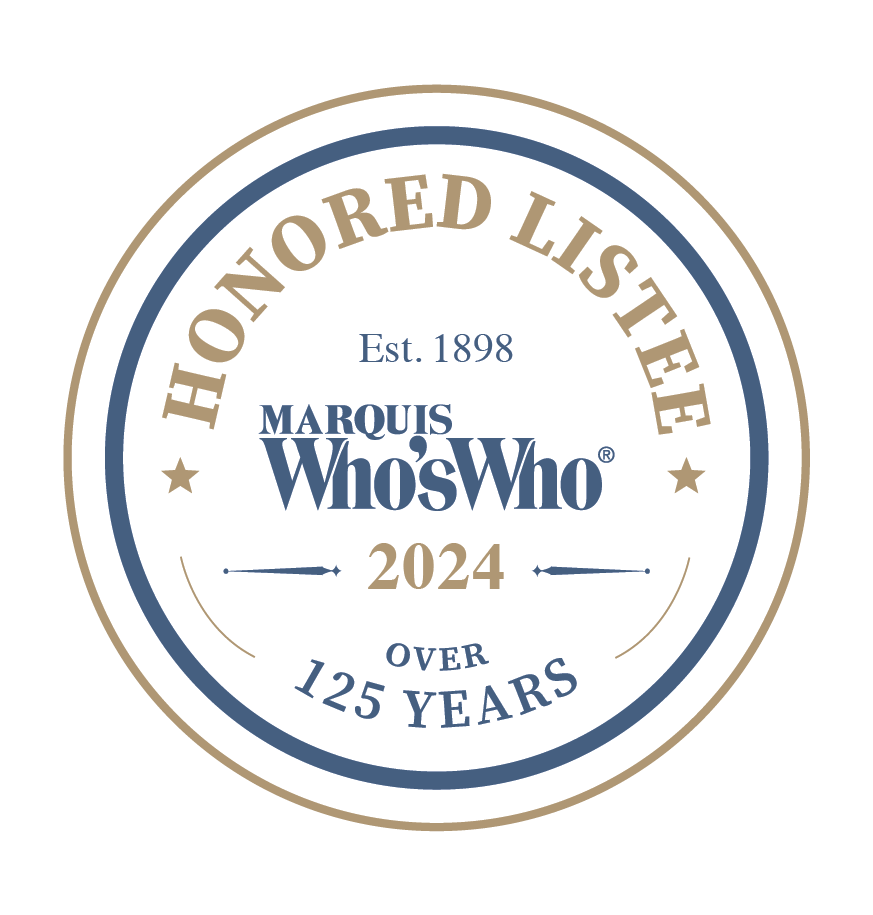
Shorin Ryu Shidokan Karate
Virginia Dojo Lineage
沖縄 小林流空手道 米国志道館
Okinawan Shorin Ryu Karate Do Beikoku Shidokan
(Kobayashi)
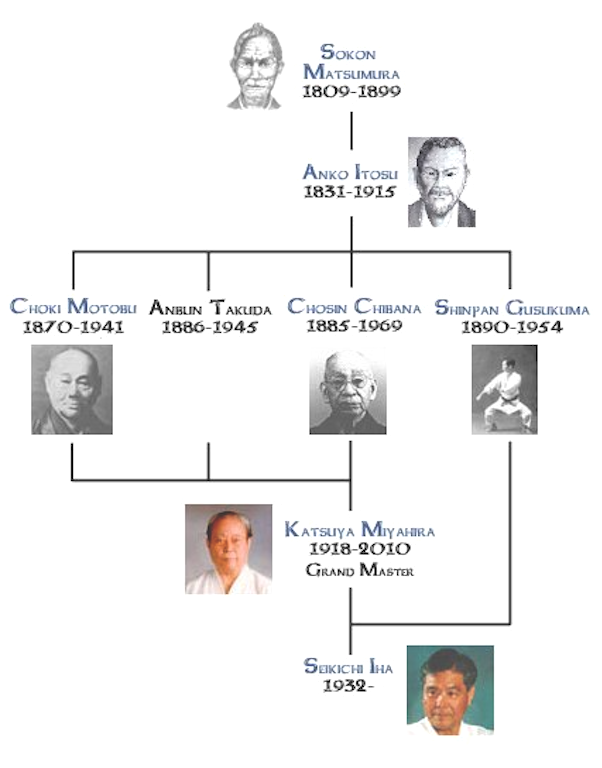
Sokon Matsumura (1809-99)
- the founder of modern self defense karate
Most Karate lineages world-wide trace their lineage back to Sokon Matsumura, the personal body guard to the last three Okinawan Kings, He combined local Martial Arts techniques (Sui di or "Our Hand") with Chinese Kung Fu and Thai Boxing techniques.
Matsumura was also widely known as Bushi Matsumura, or Warrior Matsumura because of his Martial Arts skills.
Anko Itosu
(1831-1915)
One of Matsumura's most famous students who is also called the Grandfather of Okinawan Karate. Many Okinawan Karate Schools trace lineage through him. He renamed Matsamura's Channan Katas as Pinan 1 & 2 and then developed Pinan Katas 3, 4 & 5.
The Pinan Katas were used to teach school children karate.
He also reportedly changed many of the open hand techniqes to closed hands/fists for students' safety.
In addition to Matsumura, Itosu studied with Gusukuma (unrelated to the one mentioned below) He also used the name of his karate as: Shuri te (Shuri hand) and taught the next two renown instructors:
(1890-1954)
- Sensei Iha's first karate instructor
A senior student of Anko Itosu was a schoolteacher and an acupuncturist. He was well known for his sturdy, powerful karate even though he was small in stature. It is said he taught the "old way" of karate.
- Sensei Iha said that Gusukuma taught self defense applications first. He then combined them and called them by their kata name. Each move in every kata had multiple grappling and pressure point self defense applications in addition to the normal punch-kick-block applications taught today. Most Karate Instruction today starts with Kata yet seldom goes beyond punch-kick-block applications. We are extremely fortunate to have learned the Kakushite (or Hidden Hand techniques) from Sensei Iha who was taught by his instructor, Gusukuma Sensei.
Shinpan Gusukuma developed Okinawan Shuri-te.
His techniques can still be found in both Shorin-Ryu and Shito-Ryu styles. He developed Kihon Katas 4 & 5.
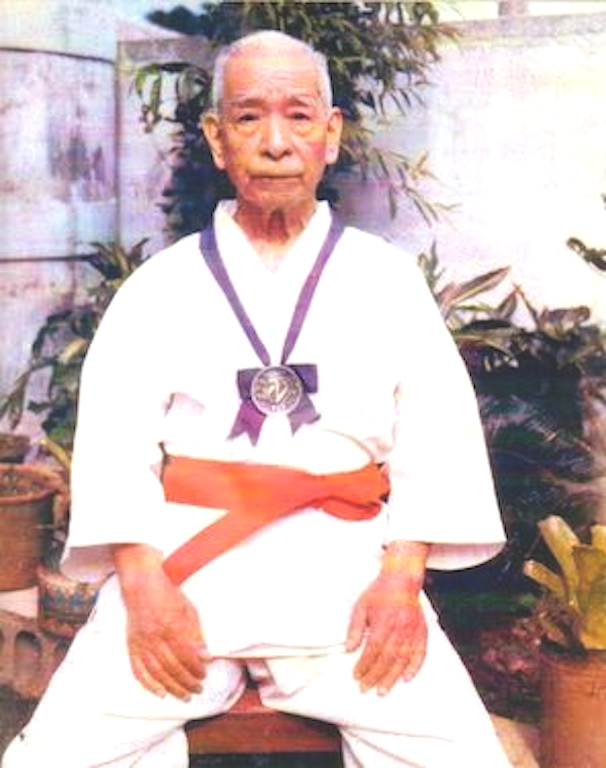
Choshin Chibana (1886-1969)
Known as the ultimate karate expert on Okinawa. He taught a wide range of students. Many refer to him as the Karate Samurai. Chosin Chibana called his karate: "Kobayashi", yet the Kanji can also be read as "Shorin ryu" 小林流. This is the onset of Okinawan Shorin Ryu Karate.
It is often reported that Chibana's karate teaching was vastly different, less severe, after WWII when he then focused more on punch-kick-block.
Chibana promoted five of his students to 9th Degree and they developed their own karate schools. Katsuya Miyahira's Shidokan is the most prominent in Okinawa, Canada, Argentina and Brazil, followed by Nakazato's Shorinkan (the most widely practiced in the United States), and Higa's Kyodokan focused mostly in Okinawa, Argentina, Uruguay and Italy.
Note: There are three major styles of Okinawan Shorin Ryu Karate: Chibana's Kobayashi, Shimambukuro's Shobayashi and Nagamine's Matsubayashi. Hohen Soke's Matsamura Seito is yet another Shorin Ryu style. While all pronounced the same, the Chinese Kanji characters used to identify them are very distinct.

Katsuya Miyahira (1918-2010)
- Sensei Iha's second Karate instructor
Miyahira studied longer with Chosin Chibana than any other student. In 1948 Katsuya Miyahira opened his Okinawan Shorin Ryu Karate dojo and named it: Shidokan.
The patch we wear on the left chest
志
道
館
Shidokan meanings:
- Warrior Path/Way Place,
- Right Path/Way Place,
- Heart Path/Way Place or
- Gentleman's Path/Way Place
Miyahira was one of 5 people Chibana promoted to 9th Degree. Chibana relinquished his Okinawan Shorin Ryu Karate Association duties to Miyahira before his death.
Miyahira was promoted to 10th Degree in 1978 by the Okinawan Shorin Ryu Karate Association.
New Paragraph
(1932-2024)
Hanshi, 10th Degree, Grand Master Okinawan Shorin Ryu Shidokan Karate.
Recognized by the Okinawan Government as an Intangible Cultural Heritage Asset, the highest honor the Okinawan Government can bestow upon a Karate Master.
Iha began his karate studies with his uncle and then in 1950 begn studying with Shinpan (Shiroma) Gusakuma. After Gusukuma died in 1954 he began studying at the Shidokan Karate Dojo with Katsuya Miyahira.
Sensei Iha moved to Lansing, Michigan from California in 1975. After teaching in many locations he opened the Original Okinawa Karate Dojo on East Michigan Ave. in Lansing, Michigan. His students have established dojos throughout the United States, Canada, Israel, Colombia, Okinawa, and Japan.
Upon receiving his 10th Degree in 2001 from the Okinawan Shorin Ryu Karate Association he named his Karate Association: Beikoku Shidokan: American Shidokan.
Sensei Iha was Katsuya Miyahira's senior student and is still so identified on Miyahira's Okinawa Dojo leader board still hanging today.
(see picture below)
Iha's students wear the Shidokan Kanji patch
志道館 on the left chest and
the Beikoku Shidokan 米国志道館 patch on the left shoulder. (See Image Below)
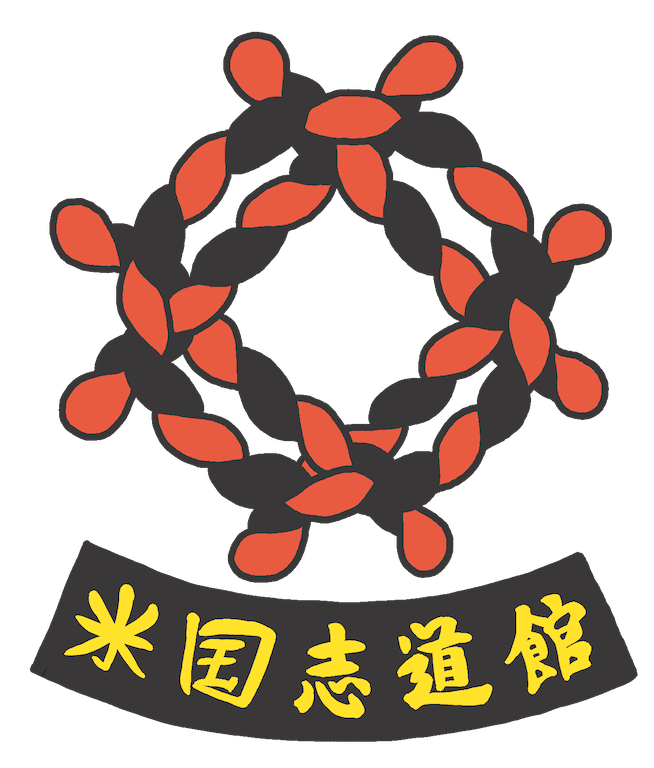
The Beikoku Shidokan Symbol
The red and black colors represent the belt colors of the highest degrees in karate which is the ultimate goal of students pursuing the Way of Karate.
The circle depicts harmony, cooperation, and friendship.
These are the goals of the students pursuing the Way of Karate.
The square represents a measure that means courtesy and forbearance.
The four poles signify advancement.
These are the goals o the students pursuing the Way of Karate.
The goal is to become a respected person of character through the discipline of the Way of Karate.
The Philosophy of Okinawan Shorin Ryu Self Defense Karate per Grand Master Seikichi Iha:
"Traditional Okinawan Self Defense Karate stresses peace, harmony, and the respect for others over competition. Perfection of character and self control are of utmost importance in self defense."
Grand Master Seikichi Iha stresses that self defense karate focuses on:
- Friendship,
- Cooperation, and
- Learning.
S
Click here for a listing of
Okinawan Shorin Ryu Beikoku Shidokan Karate dojos in the United States, Israel, Canada & Colombia.
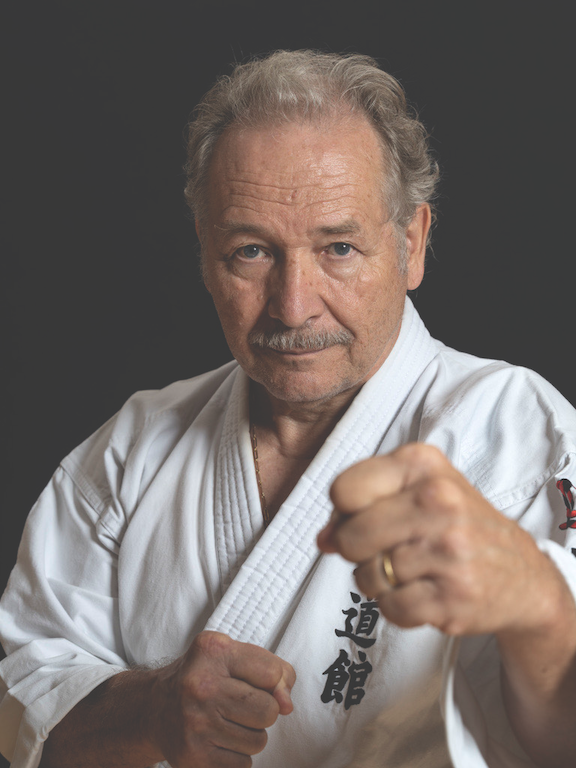
Hanshi, 9th Degree, Virginia Dojo
Roberto began martial arts classes in 1969. He studied judo, Shorinkan Shorin Ryu karate, Shotokan Karate, Goju Ryu Karate, and Kung Fu. After a 4-year overseas assignment in South America, he returned to his original karate dojo in 1979 in Lansing, MI to discover then 7th Degree Sensei Iha, now Grand Master, 10th Dan, had begun teaching there and changed the Dojo's name to Original Okinawan Karate. He continued to train with this internationally renown Karate Grand Master, and became one of his senior students, until Sensei Iha's death in 2024.
During Roberto's many long-term overseas assignments he trained US Embassy Security Personnel, US Marines, foreign security agents, and people just like you in Okinawan Shorin Ryu self defense Karate. When stationed in the United States he always developed a cadre of dedicated karate students.
Roberto now concentrates on teaching proven-effective, adult-focused, self defense martial arts at the Virginia Dojo.
Roberto is a member of the East Coast Beikoku Shidokan Black Belt Testing Panel and the National Testing Panel.
In 2020 & 2021 Roberto was recognized as the "Best Martial Arts Teacher in Alexandria" by Expertise.
In 2024 he was recognized in the Prestigious Marquis
"Who's Who" Registry.

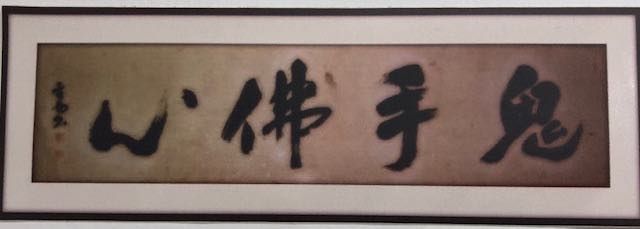
" Buddha Heart - Demon Hands"
This the Kanji written in Katsuya Miyahira's Dojo that continues to inspire Okinawan Shorin Ryu Shidokan Karate Students
This could also be read from right to left as
"Demon Hands Buddha Heart"
Leader Board in Katsuya Miyahiraś Dojo:
From Right to Left it reads:
10th Dan
Miyahira Katsuya
Iha Seikichi
Miyagi Takeshi
Shinkai Hiroyuki
Shimambukuro Kaseai

